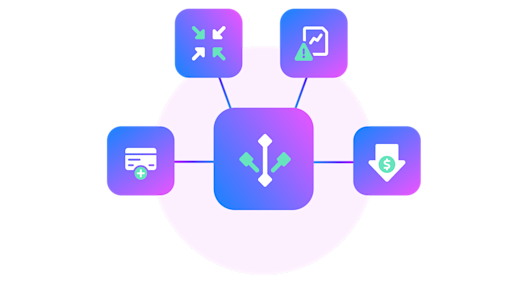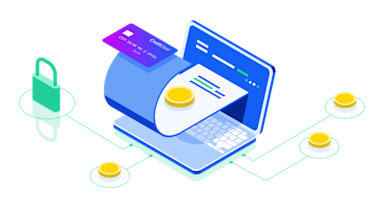Contents
In the context of data protection, modern digital businesses realize the dangers that come with using sensitive information in its raw form. Figuring out a way to collect and use the original data without putting it at risk remains a challenge, and organizations must channel a lot of their resources into IT security that protects their users’ sensitive data like credit card numbers and other cardholder information.
With so many highly-publicized data breaches hitting newspaper headlines in recent years, including a massive Capital One data breach in 2019, it has become more important than ever to protect sensitive consumer data and limit its exposure to data leaks.
Thankfully, a number of innovative technologies have made it easier to reduce data security risk - as well as meet the requirements of Payment Card Industry Data Security Standard ( DSS) compliance.
From encryption and tokenization to next-generation methods like aliasing, businesses in the digital age have a number of options when it comes to protecting and safely using sensitive user information.
Encryption and tokenization are two of the most popular of these methods.
While they both serve valuable functions in countless modern organizations, they both have their own unique drawbacks - and many businesses may not even realize what new and innovative options are currently available to them.
Sensitive Information and the Growing Threat of Data Breaches
The hard-to-face reality is that billions of personal records are exposed each year.
Just in the first half of 2019, for example, there have been over 3,800 publicly disclosed data leakage events in which an astonishing 4.1 billion records were compromised, according to the 2019 MidYear QuickView Data Breach Report.
As we continue to discover the trends of data breaches, it becomes clear that large-scale data leaks make up the lion’s share of overall cybersecurity breaches. The same report cites that 3.2 billion of the 4.1 billion leaked records were exposed from just eight data leakage events.
Massive data leaks are fast becoming a frequent occurrence – with headlines regularly popping up highlighting cybersecurity disasters at popular corporations that have impacted millions of people.
In the summer of 2019, news of a cybersecurity disaster rattled North American consumers. The highly-publicized Capital One data breach of 2019 led to the sensitive data exposure of 100 million Americans and 6 million Canadians – including hundreds of thousands of Social Security numbers and bank account numbers.
Similarly, in July of 2019, we learned about a whopping $700 million settlement that resulted from the Equifax data breach. Now, years after the incident, the 147 million customers impacted by that disaster all get a piece of that pie.
It only seems like a matter of time until the next multi-million-dollar data breach settlement will be announced, and another consumer data-handling organization will have their feet publicly held to the fire.
Thankfully, a number of innovative data protection approaches have made it easier to safely collect and store cardholder data, credit card information, and other data - greatly reducing the risk of data breaches.
Figuring Out How to Protect Sensitive Data
Even if an organization does not vault credit card payments or other forms of sensitive data, any modern business must invest sufficiently in their cybersecurity protections.
But for companies that collect, store or transfer sensitive information, such as cardholder data like Primary Account Numbers (PANs) or other types of Personally Identifiable Information (PII), from account passwords to Social Security numbers - the importance of airtight data security systems is substantially higher.
Apart from making customers feel safe using their products, businesses also have to meet various regulatory requirements to prove that they're compliant with one or more legal frameworks like SOC 2, HIPAA and PCI.
Given the disastrous effects that a cybersecurity mishap can have on a company of any size, combined with the various compliance frameworks they must abide by, modern businesses are investing substantially in sensitive information security programs.
From building their own IT security teams to hiring a third-party cybersecurity vendor, companies need to make sure they’re safeguarding their users’ data.
And, these days, when we talk about how businesses protect sensitive data, we’re usually mentioning either tokenization or encryption. Nearly every digital organization already relies on tokenization and/or encryption, to some degree, as part of their IT security policies.
But which is best, and how are they different?
Tokenization vs. Encryption: What’s the Difference?
Encryption vs. tokenization - what is the difference, and which is superior.
The truth of the matter is that both of these data protection techniques offer unique strengths for particular use cases, and both are incredibly valuable for various types of businesses.
Encryption locks sensitive data behind a complex mathematical algorithm, and this encrypted data is only “unlockable” using a specific encryption key. Once the encryption is “solved” at the end point, the original data is revealed. Unfortunately, the encrypted data becomes vulnerable if a hacker has access to the encryption key.
Tokenization, on the other hand, is a way to limit storing plain text sensitive data by using “tokens” to replace the original data. Unlike with data encryption, these tokens are not reversible and cannot be solved. These nonsensitive tokens must be revealed using the correct tokenization solution - making tokenization more appropriate than encryption for structured data, like credit card numbers.
However, with both tokenization and encryption, the original data still resides on a business’ servers to varying degrees. With tokenization, for example, there are two points where the raw data is at risk: the data vault and the original point of capture.
This means that there are still system components where the original sensitive data is flowing - making these systems still within the scope of PCI DSS requirements.
But what if businesses could still use sensitive data exactly as they are now, but not possess it at any point?
By removing the data from a company’s systems entirely, those networks would be out of PCI compliance scope.
This is where data aliases come into the picture.
Descoping Entirely with Data Aliasing by VGS
While helpful with data security, both encryption and tokenization maintain original sensitive data in a business’ possession. With aliasing, it’s possible to collect, store and transfer this same data just as if it was in its raw state, but without ever possessing it in the first place.
By working with a third-party data security partner that provides data aliasing, you can benefit from sensitive data while keeping your systems completely clean - removing those systems from PCI DSS compliance scope entirely.
As a trusted data custodian, VGS handles 100% of data capture and vaulting for businesses that leverage their security solutions. By using VGS’ Zero Data approach, companies remove their systems from PCI DSS compliance scope entirely – removing any compliance risk and completely mitigating the risks of data leaks.
VGS takes care of all collection, storage and transfer of sensitive data on your business' behalf using its innovative Zero Data aliasing method, so your systems are decoupled from compliance requirements entirely.
Moreover, when businesses implement VGS solutions to handle their sensitive data, they instantly inherit VGS’ best-in-class security posture, which enables them to fast-track their certifications like PCI, SOC2 and others.
With data security as one less thing to worry about, organizations are empowered to focus their time and resources on what truly matters: continuing to grow their core businesses.



